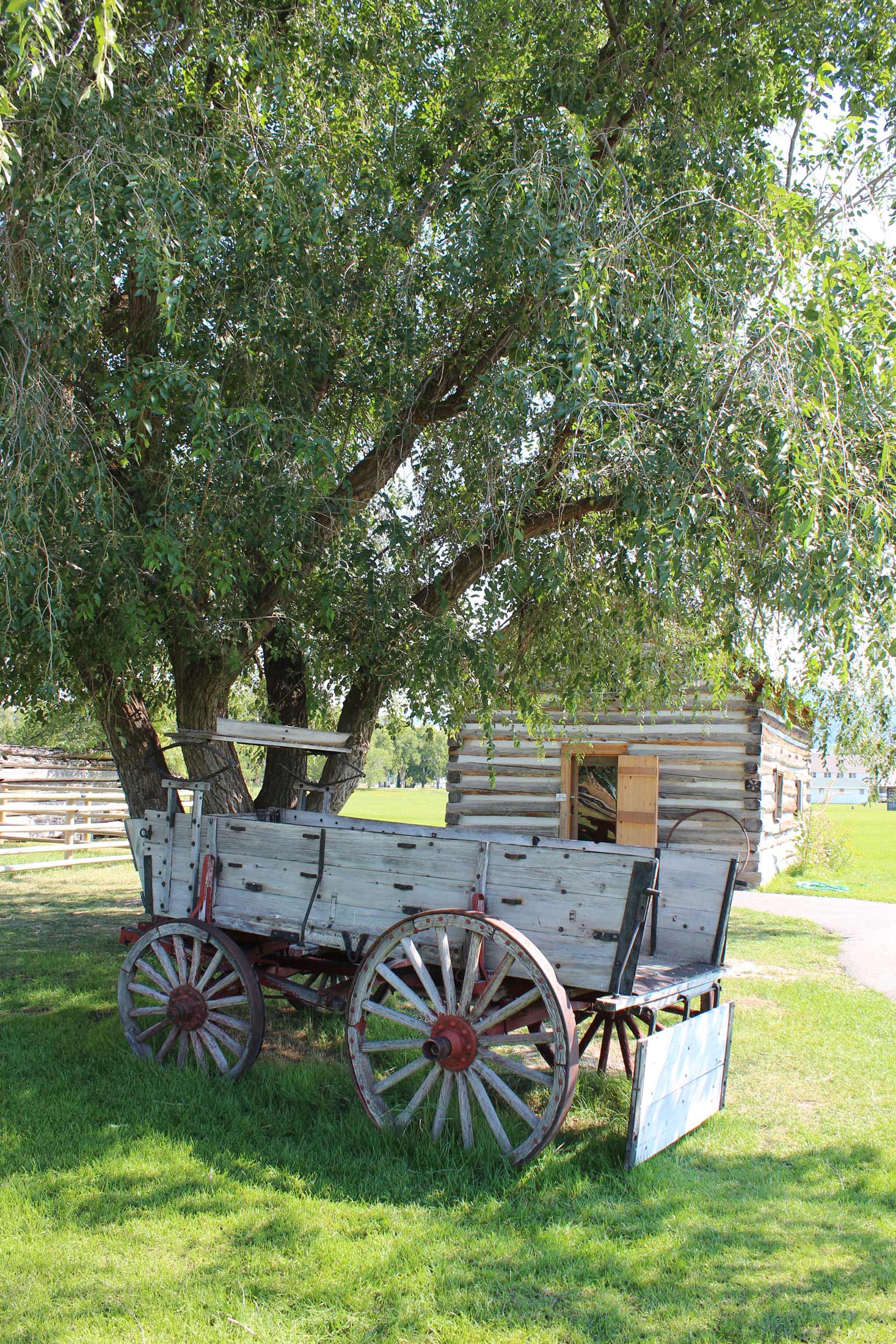

Built circa 1900, the cabin was once located on the Patrick Hayes homestead east of Missoula in the Potomac Valley. The Hayes family donated it to the Museum in 1974. It is restored to circa 1920 and is now being used for educational programming.
Can you spot... the bathroom?
It’s a bit of a tricky question! If you’re looking into the building you can see a metal tub against the far wall. Each member of the family would have taken a bath in that tub – from the smallest to the tallest! Water for cooking, bathing, drinking would have been fetched from a nearby well or creek and would have been heated on the wood burning stove. For other bathroom needs, see what’s behind the house!
The Homestead cabin was donated by descendants of Patrick Hayes, a Montana homesteader with significant ties to the early timber and cattle industries of the area. It was brought to the Historical Museum in 1974
Patrick Hayes, came from New Brunswick, Canada, to work in the forests of the Northwest. In 1889, Hayes was paid $1400 to build a road up the Blackfoot Valley, connecting the town of Bonner (and the Bonner Mill) to McNamara’s landing on the Blackfoot River.
Aspiring businessmen and entrepreneurs moved into the Blackfoot Valley hoping to capitalize on the rich natural resources. Trees were cut to provide lumber for homes, businesses, railroad ties and trestles and bridges. Mining companies also had an interest in the timber industry. The mining company, the Anaconda Co. needed thousands of board feet of lumber to shore up the mine shafts at their Butte location.
The Hayes cabin served as a bunkhouse for the single men who worked in the logging camps in the Ovando and Potomac areas.The cabin is similar in construction to other log cabins. The logs are notched and laid horizontally with chinking and daubing applied to the logs to make it weather proof. It is larger than other cabins of the Homestead era which were designated by law to be at least 10’ by 12’ with one window and one door.
During the mid- 1970’s the cabin was renovated by various service groups, including a Project 100 group of high school students who numbered all of the logs and assisted with its reassembly on site. During the years of 2002-2008 the cabin also underwent further renovations with a new roof, new chinking and daubing, installation of a concrete pad/foundation, electrification and window and door replacements. These structural changes allowed for its expanded use as a interpretive site and for the implementation of increased educational programming through tours, special events, and summer camps.
This circa 1920 cabin is a unique representative of a lifestyle long gone bye.

